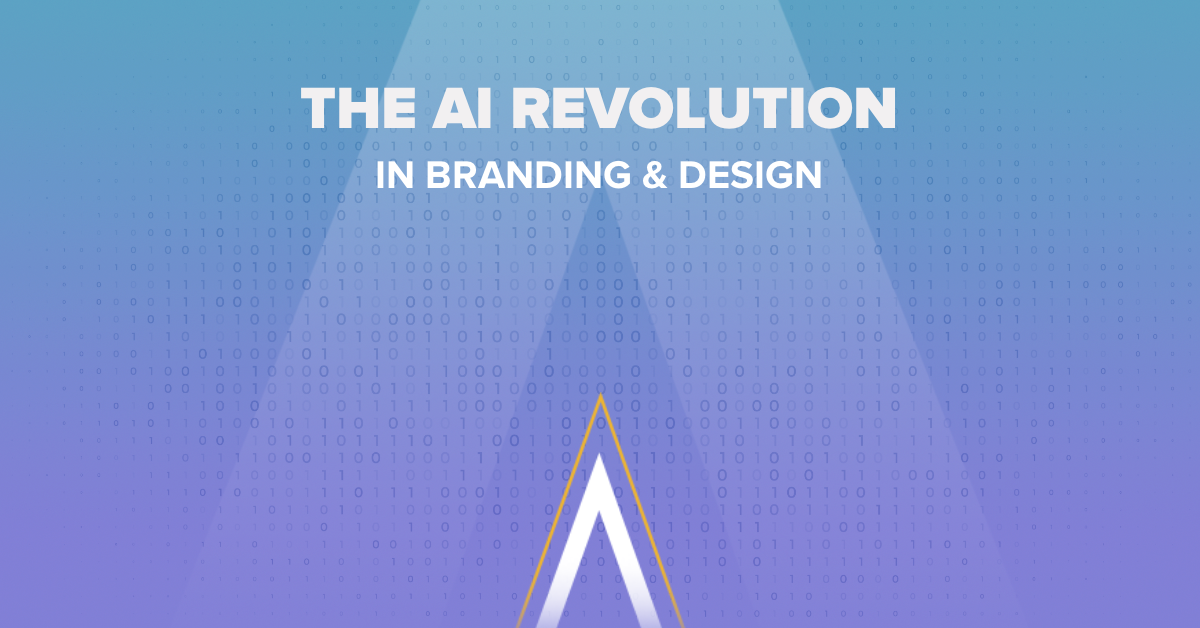
AI has made it into nearly everything at this point, and the world of marketing and branding is no exception. Tools like ChatGPT, Designs.ai, and Photoshop offer marketers the ability to perform complex tasks at the click of a button.
This has resulted in both incredible innovation and unique challenges. Despite their impressive capabilities, AI tools are rarely complete substitutes for human expertise. They don’t think as creatively as humans, and their output often feels derivative.
Successful use of AI in marketing and branding uses AI to augment and improve existing processes, rather than replace human expertise. Consider it a natural evolution of traditional marketing automation.
The Impact of AI on the Industry
AI tools are revolutionizing personalization, content, and design. Most tools do one of three things:
- Suggest design changes based on data
- Add AI enhancements to design
- Create content outright
The first category includes tools like Topaz AI and Khroma. Among other things, they can take an image and suggest beneficial tweaks for visual factors like color and resolution.
The second category includes tools like Photoshop and ChatGPT. Photoshop’s Generative Fill feature lets users expand an image based on what AI predicts would be around it. Writing tools like ChatGPT can also be prompted to expand written content.
The third category includes language models like GPT-3 and image generation programs like DALL-E. Although they can create whole pieces of content from thin air, it is usually best to consider their output as an intermediate product to be edited.
The Double-edged Sword
Using AI to develop marketing materials is a double-edged sword. While it may be quick and efficient, it will never be 100% original.
Marketers do risk a loss of brand voice and authenticity if they rely too heavily on AI generated materials. They can also introduce unwanted bias into their content, such as generated images that reflect group stereotypes.
Another problem is legal and copyright issues. Since the technology is so new, there are few established laws that state clearly who owns the rights to AI-generated content. When precedents are set, they may vary widely from country to country and from state to state.
Since AI programs are so opaque, it may be difficult to tell if the output it gives you resembles someone else’s work. Accidental plagiarism is a real possibility.
And when an AI program creates a piece of content, who actually owns that content? There are a few plausible answers:
- The developer of the AI program
- The user of the AI program
- The AI platform itself
- The people who made the content that trained the AI program
That last possibility is of serious concern, since many artists and writers are upset that their work is being co-opted by computer programs to replace them. But it is not the only possibility.
A legal case in 2014 ruled that a selfie taken by a monkey belonged in the public domain. The court ruled that only the photographer could claim rights to the photograph, but since animals cannot hold copyright, the selfie’s copyright belonged to nobody.
Although the details are different, the parallels to AI generated content are striking.
Best Practices: AI in Brand Marketing and Design
When it comes to brand marketing, AI should be used primarily as just another tool in your marketer’s toolbox. You should not depend on it exclusively for articulating your brand’s values, or for conveying your brand’s voice and tone.
To make the best out of AI, we give these recommendations:
Clarify your objectives. Ensure that your prompts express clear objectives and that your AI generated designs are completely original. The output you get can be no better than the input you give.
Combine human and AI insights. The interesting thing about most AI programs is that they are capable of trivial errors and blind spots even while they produce otherwise astounding results. The same AI that beat the Go world champion in 2017 was recently defeated by a player who used a strategy that does not work on human players.
Humans, however, excel at creatively synthesizing a wide variety of complex information into something useful. Our intuition and contextual understanding are (currently) irreplaceable. But augmenting our skills with AI can create even better results.
Use AI primarily for intermediate work. Avoid using AI for public or client facing content, like the final draft of a logo.
AI is great for brainstorming, and for coming up with intermediate work like content outlines. For these sorts of tasks, 100% originality or accuracy is not necessary, so long as humans turn the finished product into something that reflects positively on your brand.
In this sense, treat AI prompts like a Google search—you wouldn’t outright copy anything from a Google search as your marketing material, but you might use what you see for inspiration.
Conclusion: A Balanced Approach
AI is a natural evolution of traditional marketing automation, not a radical departure from things before. The best mindset is to approach AI with balance: embrace innovation while remaining cautious.
The future of this powerful technology remains to be seen. Most likely, future iterations will be more powerful and more precise. But they are also expensive to run, and there is a limited supply of data left to train them on.
Like any technology, it will eventually reach its Plateau of Productivity, where we know exactly what tasks it is best used for.
Ready to move forward in your branding journey?
At GATE, we specialize in helping businesses develop the right strategy for telling their story and achieving their goals.
We are GATE. Let’s do this together.
Contact us today to get started.